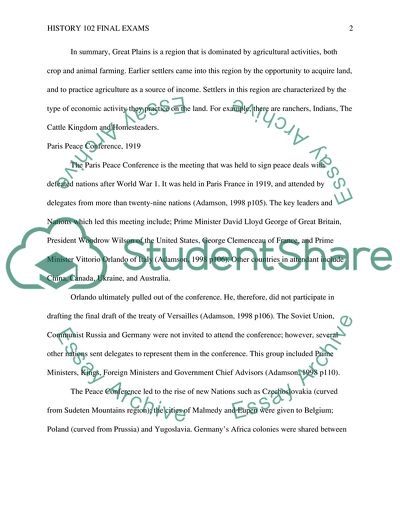Cite this document
(“Agricultural Settlers and the Great Plains Essay”, n.d.)
Retrieved from https://studentshare.org/history/1582872-history-102-final-exam
Retrieved from https://studentshare.org/history/1582872-history-102-final-exam
(Agricultural Settlers and the Great Plains Essay)
https://studentshare.org/history/1582872-history-102-final-exam.
https://studentshare.org/history/1582872-history-102-final-exam.
“Agricultural Settlers and the Great Plains Essay”, n.d. https://studentshare.org/history/1582872-history-102-final-exam.


